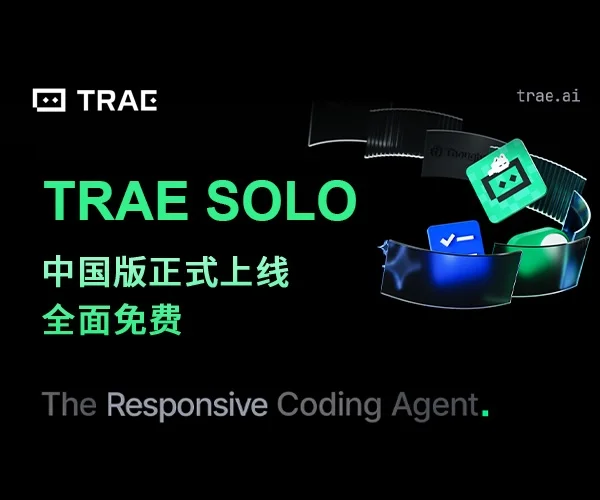开天辟地 HarmonyOS(鸿蒙) - 工具: Targets, Products
开天辟地 HarmonyOS(鸿蒙) - 工具: Targets, Products
示例如下:
pages\tool\TargetsProducts.ets
/*
* Targets, Products
*
* 一个 hap, hsp, har 可以定制出多个 target,每个 target 都是一个定制的 hap, hsp, har
* 一个 app 可以定制出多个 product,每个 product 都是一个定制的 app
*
* 步骤:
* 1、在 entry/build-profile.json5 中做 targets 配置
* 2、在 hsp1/build-profile.json5 中做 targets 配置
* 3、在 app 级的 build-profile.json5 中做 products 配置和 modules 配置
* 4、点击右上角工具栏“选择模块”框的左侧的“圆形”按钮,可以选择编译时的 product 和 target,也可以指定是 debug 模式还是 release 模式
* 5、如需构建 hap 则:Build -> Build Hap(s)/APP(s) -> Build Hap(s)
* 6、如需构建 app 则:Build -> Build Hap(s)/APP(s) -> Build APP(s)
*/
// 不同的 target 定制了不同的 MyConfig.ets(地址分别为:entry/src/default/MyConfig.ets, entry/src/target1/MyConfig.ets, entry/src/target2/MyConfig.ets)
// 通过类似 import { getTargetName } from 'entry/MyConfig'; 的方式导入,则不同的 target 会导入对应的不同的代码
import { getTargetName } from 'entry/MyConfig';
import { TitleBar } from '../TitleBar';
@Entry
@Component
struct TargetsProducts {
@State message: string = ""
aboutToAppear(): void {
// 不同的 target 使用不同的代码
this.message = getTargetName()
}
build() {
Column({space:10}) {
TitleBar()
Text(this.message)
// 不同的 target 使用不同的字符串资源
Text($r('app.string.mytarget_name'))
// 不同的 target 使用不同的图片资源
Image($r('app.media.mytarget_logo')).width(100).height(100)
}
}
}
\entry\build-profile.json5
{
"apiType": "stageMode",
"buildOption": {
"sourceOption": {
"workers": [
'./src/main/ets/workers/myworker.ets',
'./src/main/ets/workers/transcodeworker.ets'
]
}
},
"buildOptionSet": [
{
"name": "release",
"arkOptions": {
"obfuscation": {
"ruleOptions": {
"enable": false,
"files": [
"./obfuscation-rules.txt"
]
}
}
}
},
],
// 配置 targets
// 一个 hap 可以定制出多个 target,每个 target 都是一个定制的 hap
// 注:
// 1、如果 hap 引用了 hsp 则需要在 hsp 模块的 build-profile.json5 中配置相关的 target,否则会报错 Unable to find target 'target1' in module 'hsp1'. Make sure module 'hsp1' has the same target as module 'entry'.
// 2、哪个 target 需要打包到哪个 product 中,是在 app 级的 build-profile.json5 中配置的
"targets": [
{
"name": "default", // 此 target 的名称
"source": {
"sourceRoots": ["./src/default"], // 此 target 的定制代码的目录
"abilities": [
{
"name": "com.webabcd.harmonydemo.EntryAbility", // 此 target 的入口 ability 的名称
"icon":"$media:mytarget_logo", // 此 target 的入口 ability 的图标(即定制 app 的图标)
"label":"$string:mytarget_name", // 此 target 的入口 ability 的标题(即定制 app 的标题)
}
]
},
"resource": { // 此 target 的定制资源的目录
"directories": [
"./src/main/resources",
"./src/default/resources"
]
},
"config": {
"deviceType": [ // 此 target 支持的设备类型
"phone",
"tablet",
"2in1"
]
}
},
{
"name": "target1",
"source": {
"sourceRoots": ["./src/target1"],
"abilities": [
{
"name": "com.webabcd.harmonydemo.EntryAbility",
"icon":"$media:mytarget_logo",
"label":"$string:mytarget_name",
}
]
},
"resource": {
"directories": [
"./src/main/resources",
"./src/target1/resources"
]
},
"config": {
"deviceType": [
"phone",
"tablet",
"2in1"
]
}
},
{
"name": "target2",
"source": {
"sourceRoots": ["./src/target2"],
"abilities": [
{
"name": "com.webabcd.harmonydemo.EntryAbility",
"icon":"$media:mytarget_logo",
"label":"$string:mytarget_name",
}
]
},
"resource": {
"directories": [
"./src/main/resources",
"./src/target2/resources"
]
},
"config": {
"deviceType": [
"phone",
"tablet",
"2in1"
]
}
}
]
}
\hsp1\build-profile.json5
{
"apiType": "stageMode",
"buildOption": {
},
"buildOptionSet": [
{
"name": "release",
"arkOptions": {
"obfuscation": {
"ruleOptions": {
"enable": false,
"files": [
"./obfuscation-rules.txt"
]
}
}
},
},
],
// 配置 targets
// 注:
// 1、如果 hap 配置了 target,则 hap 依赖的 hsp 也需要做相关的 target 配置,否则会报错 Unable to find target 'target1' in module 'hsp1'. Make sure module 'hsp1' has the same target as module 'entry'.
// 2、哪个 target 需要打包到哪个 product 中,是在 app 级的 build-profile.json5 中配置的
"targets": [
{
"name": "default"
},
{
"name": "target1"
},
{
"name": "target2"
}
]
}
\build-profile.json5
{
"app": {
"signingConfigs": [],
// 配置 products
// 一个 app 可以定制出多个 product,每个 product 都是一个定制的 app
// 注:必须要存在名为 default 的 product
"products": [
{
"name": "default", // 此 product 的名称
"signingConfig": "default",
"compatibleSdkVersion": "5.0.1(13)",
"runtimeOS": "HarmonyOS",
"buildOption": {
"strictMode": {
"caseSensitiveCheck": true,
"useNormalizedOHMUrl": true
}
},
"bundleName": "com.webabcd.harmonydemo", // 此定制 app 的 bundleName(会覆盖 AppScope/app.json5 中的相关配置)
"icon": "$media:app_icon", // 此定制 app 的图标(会覆盖 AppScope/app.json5 中的相关配置),但是会优先使用 entry 的 target 的入口 ability 的 icon
"label": "$string:app_name" // 此定制 app 的标题(会覆盖 AppScope/app.json5 中的相关配置),但是会优先使用 entry 的 target 的入口 ability 的 label
},
{
"name": "product1",
"signingConfig": "default",
"compatibleSdkVersion": "5.0.1(13)",
"runtimeOS": "HarmonyOS",
"buildOption": {
"strictMode": {
"caseSensitiveCheck": true,
"useNormalizedOHMUrl": true
}
},
"bundleName": "com.webabcd.harmonydemo1",
"icon": "$media:app_icon",
"label": "$string:app_name"
},
{
"name": "product2",
"signingConfig": "default",
"compatibleSdkVersion": "5.0.1(13)",
"runtimeOS": "HarmonyOS",
"buildOption": {
"strictMode": {
"caseSensitiveCheck": true,
"useNormalizedOHMUrl": true
}
},
"bundleName": "com.webabcd.harmonydemo2",
"icon": "$media:app_icon",
"label": "$string:app_name"
}
],
"buildModeSet": [
{
"name": "debug",
},
{
"name": "release"
}
]
},
// 配置 modules
// 当使用了 targets, products 时,则需要在此处配置 target 需要打包到哪个 product 中
"modules": [
{
"name": "entry",
"srcPath": "./entry",
"targets": [
{
// 将 entry 模块的名为 default 的 target 打包到名为 default 的 product 中
"name": "default",
"applyToProducts": [
"default"
]
},
{
"name": "target1",
"applyToProducts": [
"product1"
]
},
{
"name": "target2",
"applyToProducts": [
"product2"
]
}
]
},
{
"name": "hsp1",
"srcPath": "./hsp1",
"targets": [
{
// 将 hsp1 模块的名为 default 的 target 打包到名为 default 的 product 中
"name": "default",
"applyToProducts": [
"default"
]
},
{
"name": "target1",
"applyToProducts": [
"product1"
]
},
{
"name": "target2",
"applyToProducts": [
"product2"
]
}
]
},
{
"name": "feature1",
"srcPath": "./feature1",
"targets": [
{
"name": "default",
"applyToProducts": [
"default"
]
}
]
},
{
"name": "har1",
"srcPath": "./har1",
},
{
"name": "har2",
"srcPath": "./har2",
},
{
"name": "ndk1",
"srcPath": "./ndk1",
"targets": [
{
"name": "default",
"applyToProducts": [
"default"
]
}
]
}
]
}
\entry\src\default\MyConfig.ets
export const getTargetName = () => "default"
\entry\src\default\resources\base\element\string.json
{
"string": [
{
"name": "mytarget_name",
"value": "default"
}
]
}
\entry\src\target1\MyConfig.ets
export const getTargetName = () => "target1"
\entry\src\target1\resources\base\element\string.json
{
"string": [
{
"name": "mytarget_name",
"value": "target1"
}
]
}
\entry\src\target2\MyConfig.ets
export const getTargetName = () => "target2"
\entry\src\target2\resources\base\element\string.json
{
"string": [
{
"name": "mytarget_name",
"value": "target2"
}
]
}



 浙公网安备 33010602011771号
浙公网安备 33010602011771号